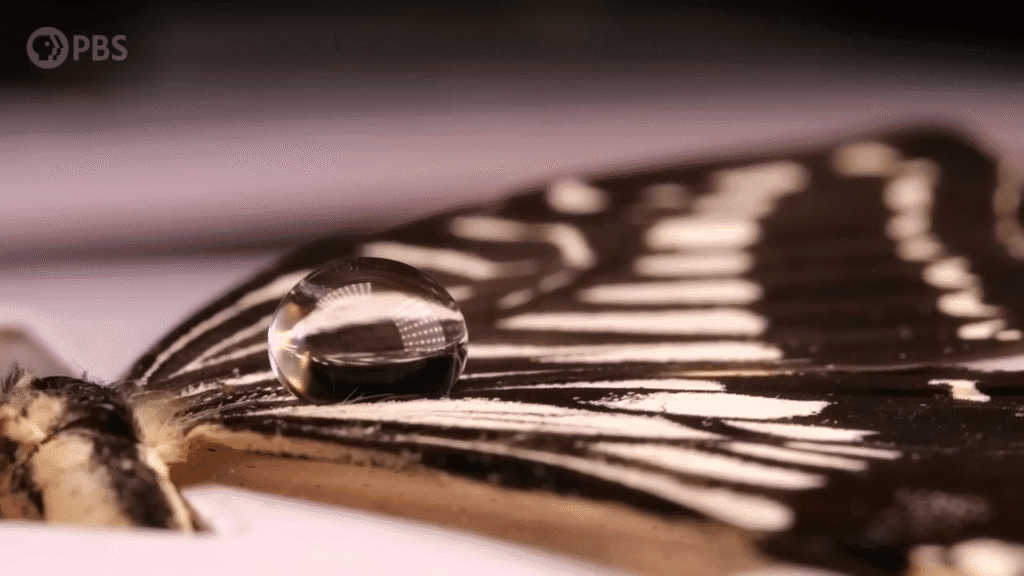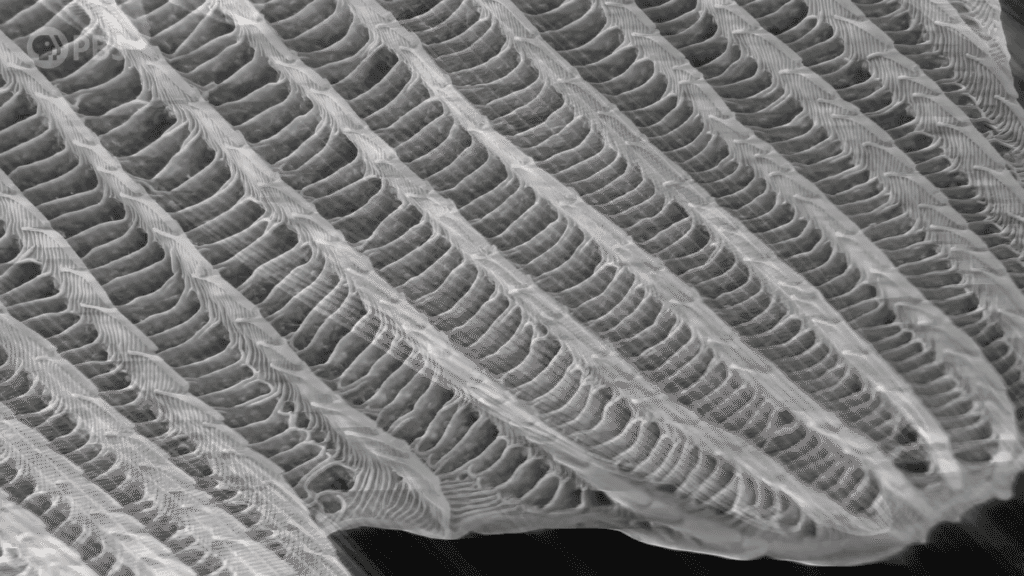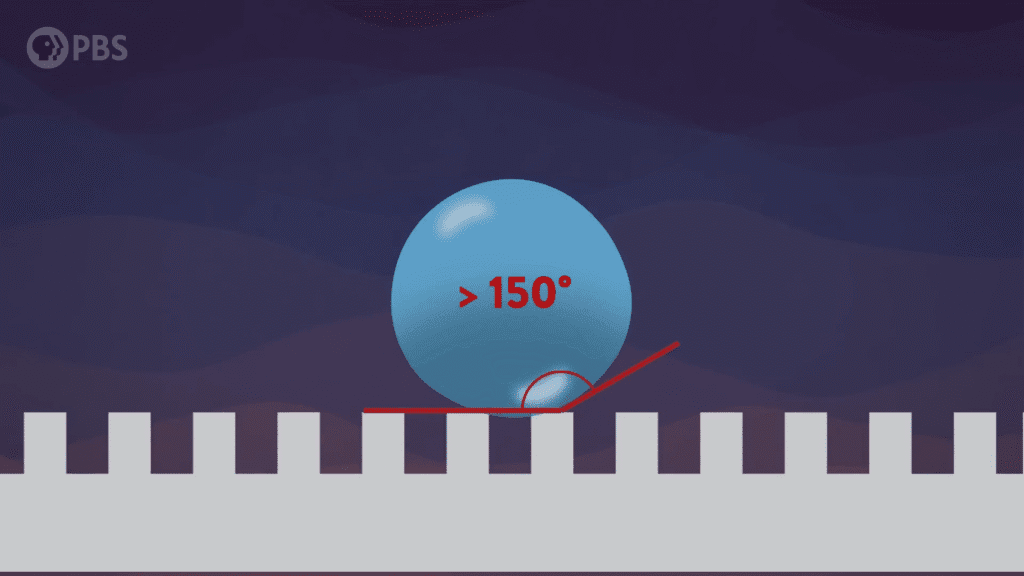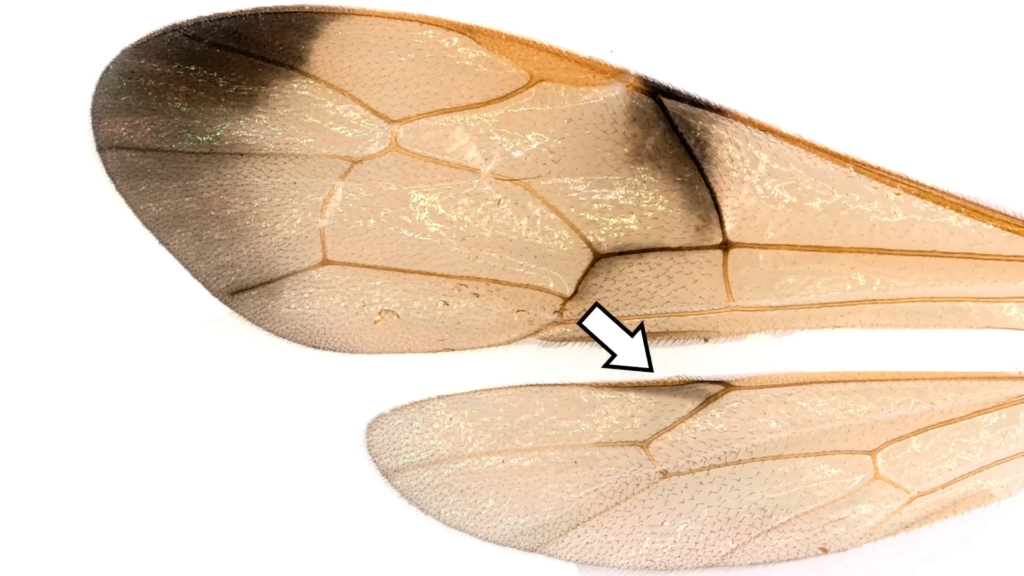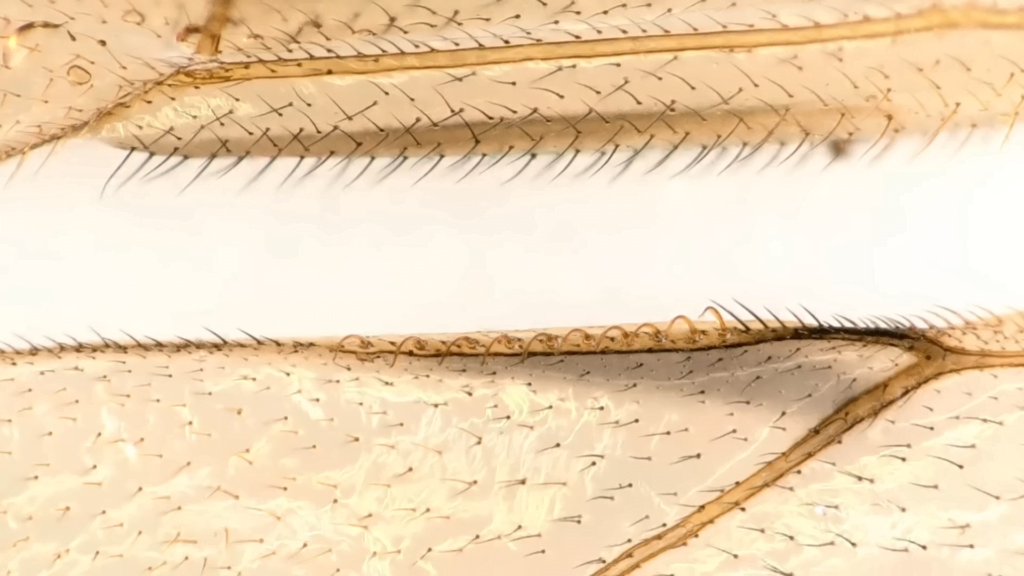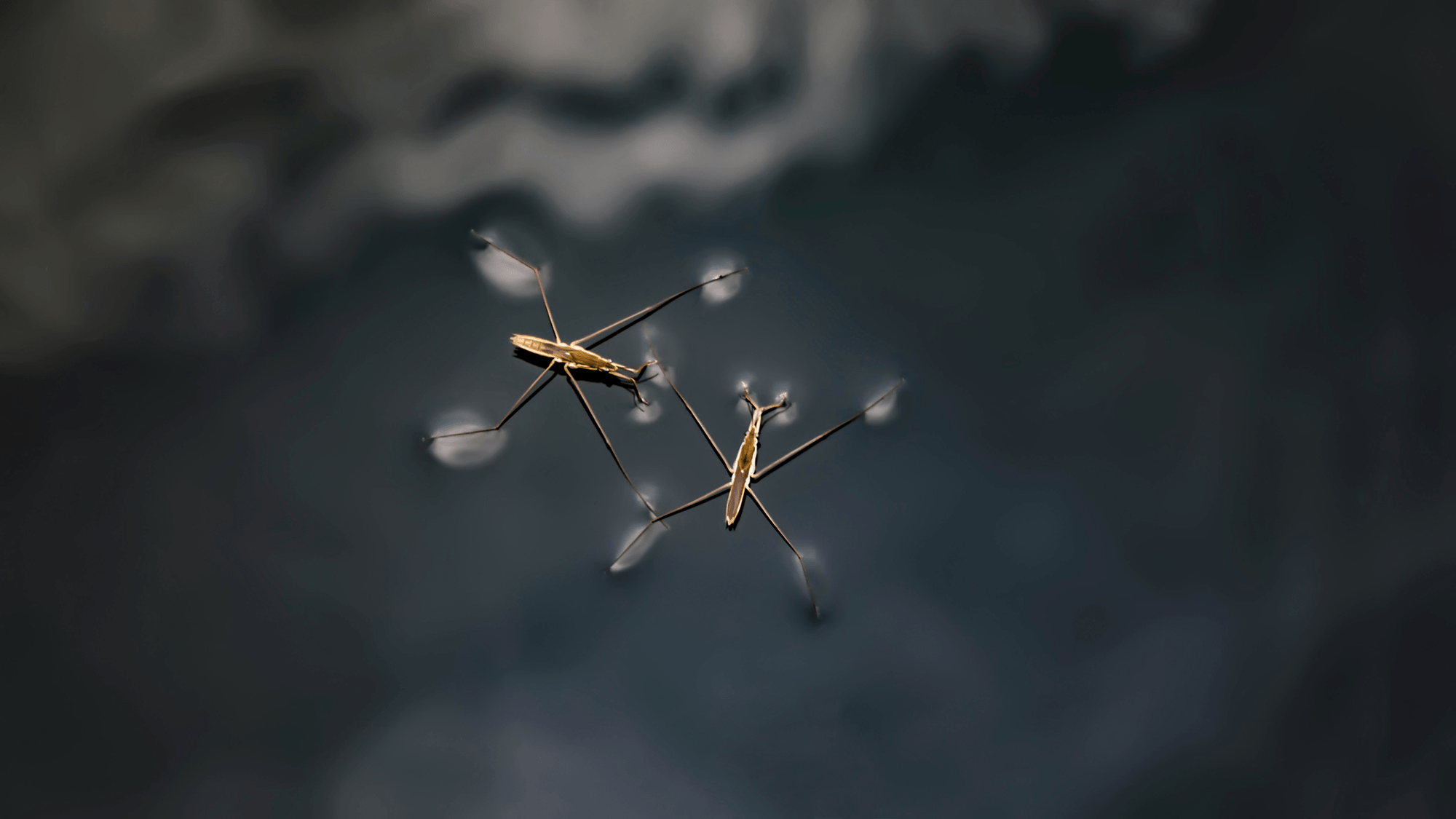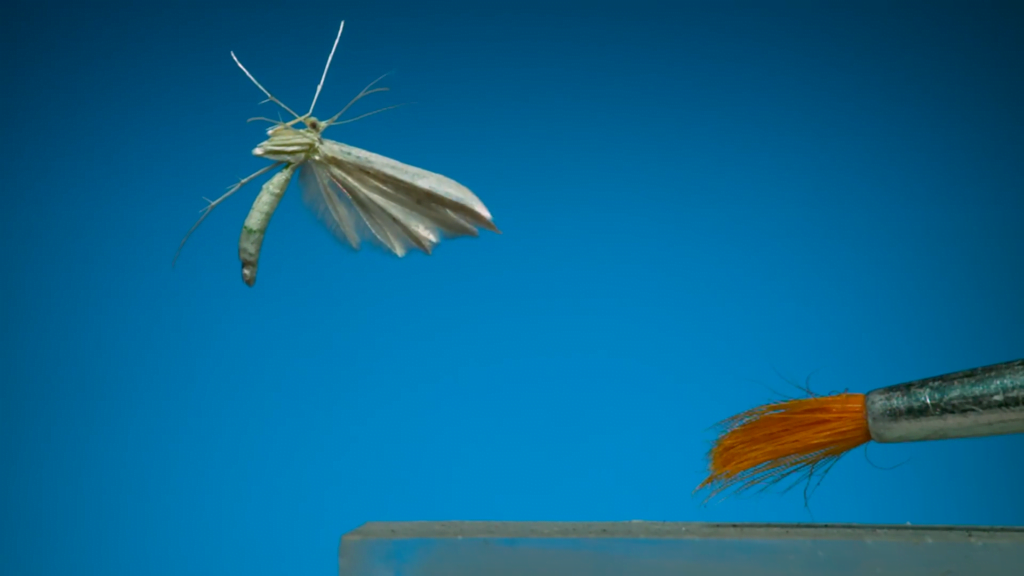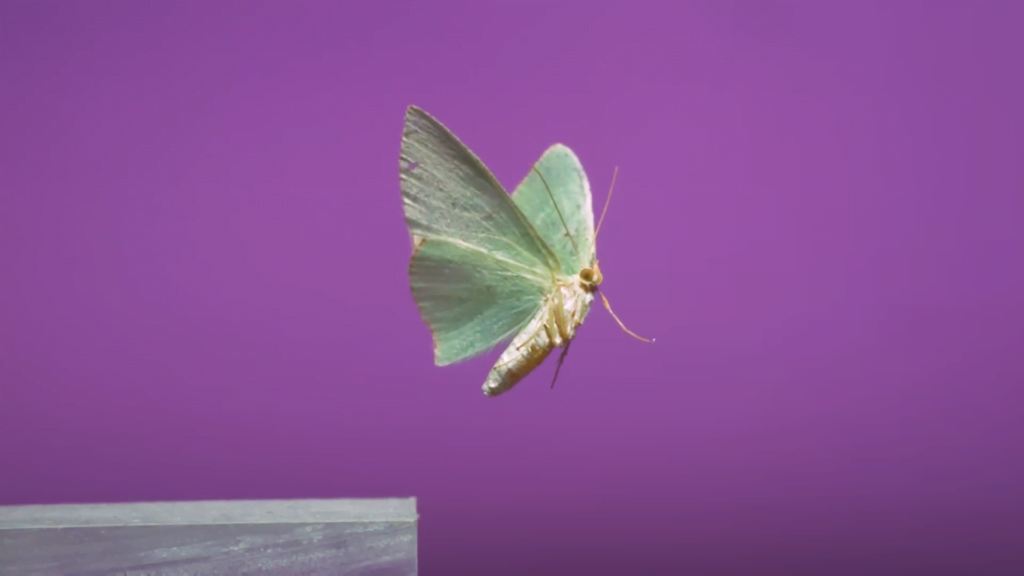Can plants recognize the sound of their pollinators? That’s the question behind this recently presented acoustic research. As bees and other pollinators hover, land, and take-off, their bodies buzz in distinctive ways. Researchers recorded these subtle sounds from a Rhodanthidium sticticum bee and played them back to snapdragons, which rely on that insect. They found that the snapdragons responded with an increase in sugar and nectar volume; the plants even altered their gene expression governing sugar transport and nectar production. The researchers suspect that the plants evolved this strategy to attract their most efficient pollinators and thereby increase their own reproductive success. (Image credit: E. Wilcox; research credit: F. Barbero et al.; via PopSci)
Tag: insects

How Insects Fly in the Rain
Getting caught in the rain is annoying for us but has the potential to be deadly for smaller creatures like insects. So how do they survive a deluge? First, they don’t resist a raindrop, and second, they have the kinds of surfaces water likes to roll or bounce off. The key to this second ability is micro- and nanoscale roughness. Surfaces like butterfly wings, water strider feet, and leaf surfaces contain lots of tiny gaps where air gets caught. Water’s cohesion — its attraction to itself — is large enough that water drops won’t squeeze into these tiny spaces. Instead, like the ball it resembles, a water drop slides or bounces away. (Video and image credit: Be Smart)

Tar Pit, Sweet Tar Pit
The La Brea Tar Pits have delivered countless creatures to their doom over tens of thousands of years. But the sticky quagmire of the pits’ natural asphalt is a comfy home to at least one animal: the petroleum fly. The fly’s maggots secrete a lipophobic — in other words, oil-repelling — fluid that allows them to move freely through the viscous black tar. That freedom means they can take full advantage of the asphalt’s trapping power by consuming a smorgasbord of stuck victims. Any asphalt the maggots swallow just passes harmlessly through them. As adults, only their feet are asphalt-resistant, but the petroleum fly still spends most its time hanging out in the pit, seeding the next generation. (Video and image credit: Deep Look)

Wasps in Flight
Personally, I’ve had some bad encounters with wasps, but Dr. Adrian Smith of Ant Lab feels the insects receive short shrift. In this video, he shows many species in the order — most of which are venomless and stingless. In high-speed video, their flight is mesmerizing. Wasps have separate fore- and hindwings, but during flight, they move them like a single wing. Velcro-like hooks on the edges of the wings hold the two together.
From a mechanics perspective, I find this fascinating. Aerodynamically, I’d expect much greater benefits from one large wing over two small ones, but outside of flight, separate wings are more easily tucked away. It’s so neat that wasps have a way to enjoy the benefits of both, enabled by a simple but secure line of hooks. (Video and image credit: Ant Lab/A. Smith)

Sharpshooters
The sharpshooter‘s superpower is pee flinging. These insects consume nutrient-poor plant sap, so to get the calories they need, they have to drink 300 times their body weight each day. All that extra liquid has to go somewhere, so the sharpshooter evolved to be an expert excretor. Each drop gathers on their anal stylus, then gets launched with an energy-efficient flick. During that move, the sharpshooter compresses the droplet, adding a little extra energy that helps speed up the drop’s flight once launched. (Video and image credit: Deep Look)

Surviving Rainfall
Water striders spend their lives at the air-water boundary, skittering along this interfacial world. But what happens when falling rain destroys their flat existence? That’s the question that motivated today’s research study, which looks water striders subjected to artificial rain.
Although the water drops themselves are far heavier than the insects, the water doesn’t strike hard enough to injure the insects. Neither a direct impact nor the forces from a neighboring impact, the researchers found, were enough to pose a problem for the water strider’s exoskeleton. Instead, they’re more likely to get flung or submerged, as follows:

The initial impact of a raindrop creates a large crater. Depending on the position of the insect relative to the point of impact, this may fling the insect away or pull it down into the cavity. When the drop hits, it creates a big crater in the water’s surface. Insects to the outside of the splash get flung outward, while those closer to the point of impact ride the crater wall downward. As the crater collapses, it forms a thick jet that pushes nearby water striders up with it.

As the initial cavity collapses, it creates a large jet that can push the strider into the air. As that initial jet collapses, it forms a second crater, which — being smaller and narrower — collapses much faster than the first one. That action, researchers found, often submerges a water strider caught in the crater.

The first jet’s collapse creates a second crater, and it’s this one that tends to trap and submerge the water strider underwater. Fortunately for the insect, their water-repellent nature means they’re covered in a thin bubble of air that lets them survive several minutes underwater. That’s time enough for the water strider to rescue itself. (Image credit: top – H. Wang, animations – D. Watson et al.; research credit: D. Watson et al.; via APS Physics)

That Drain Life
No matter your cleaning habits, it’s possible to get some unexpected roommates. This variety is the drain fly, a species well-adapted to the moist environment of our pipes. As larvae, they slither and squirm in the biofilms that form from the hair, saliva, and food that make their way down our drains. Being fully immersed is no problem for them, since they carry their own air bubble like a mini scuba tank. In adulthood, these tiny flies are incredibly hairy, all the better to escape from water. All those little hairs trap air near the fly, making it hydrophobic so that water just slides off. It takes a serious dowsing to immerse them enough to drown. (Image and video credit: Deep Look)

Moths in Flight
Moths and butterflies are such unique fliers among insects. Compared to their bodies, their wings are often enormous. High-speed video reveals the complex motions of their wing strokes. Some species have wings that flex dramatically, bringing sections of the opposite wing close enough to clap together. Other species, like the plume moth, have porous wings that resemble feathers. For these fliers, viscosity provides some resistance to keep air from simply flowing through the wing. But the little bit of air that does get through may help the moth aerodynamically. (Image and video credit: A. Smith/Ant Lab)

Scuba-Diving Fly
Mono Lake, three times saltier than the ocean, is an extreme environment by any measure. But for the alkali fly, it’s home. This extremophile insect dives into the lake, protected by a bubble sheath, to eat and lay eggs. The fly’s wings and body are covered in tiny, waxed hairs that repel water. That traps a bubble of air around the insect, allowing it to breathe. Fresh oxygen can diffuse into the bubble from the water, replenishing the supply. (Image and video credit: Deep Look)

Water-Jumping Springtails
Springtails are small, jumping insects. Semiaquatic varieties use their tails to jump off water in order to move around and escape predation. Among these water jumpers, results vary; some, like in the third image, have little to no control over their landings and will frequently faceplant or land on their backs. But some species in the family have a better technique.
These springtails grab a water droplet with their hydrophilic ventral tube (seen in the second image with a red identifying arrow) during take-off. This tiny water droplet serves several purposes. First, it adds extra weight to the insect, allowing it to better orient its body to land belly-down. Second, the drop gives the insect a way to adhere to the water during landing, preventing it from bouncing. Check out the video to see lots of high-speed video of these tiny acrobats! (Video and image credit: A. Smith/Ant Lab; research credit: V. Ortega-Jimenez et al.)


